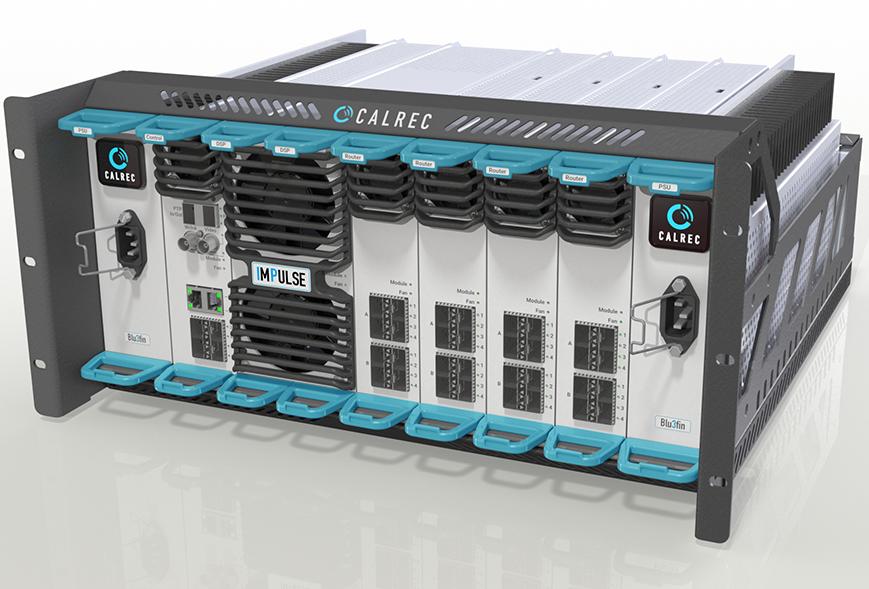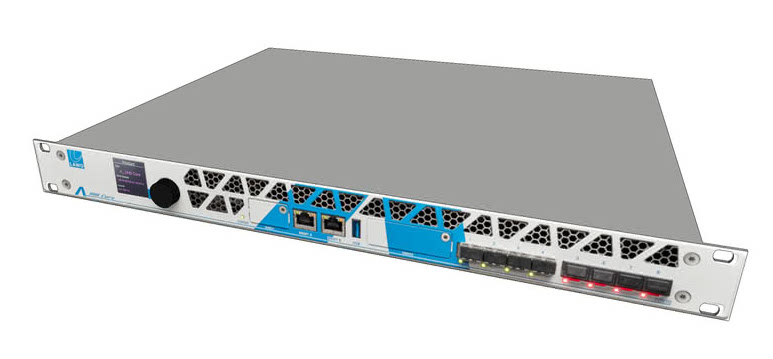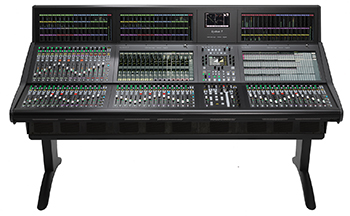Tech Focus: Immersive Audio, Part 2 — Consoles Shift Toward Software-Based Solutions
Traditional hardware configurations also support next-gen sound
Story Highlights
Broadcast audio consoles are the foundational work surfaces for immersive sound on television; no one will be mixing 7.1.4 “in the box” anytime soon. The industry is in the midst of a transition to the immersive formats that will underpin next-generation audio, and it’s beginning to show.
What until recent years looked like a visible evolutionary path for audio desks, which retained their basic form factors, such as SSL’s System T — whose design any audio engineer over the past 70 years would recognize — is giving way to more software-based black-box solutions, such as Calrec’s ImPulse Core and Lawo’s A__UHD Core. The conventional console will be with us for years to come — Calrec’s Artemis and Apollo desks remain the gold standard for remote-production applications — and standard 5.1-capable consoles will be adapted for larger mix matrixes via a combination of hardware and software upgrades. And the established form factors are adjusting to the way broadcast audio is becoming a much more fluid landscape.
Click here for Tech Focus: Immersive Audio, Part 1 — Waiting Out the Pandemic
Click here for Tech Focus: Immersive Audio, Part 3 — Multichannel Mics Take Their Place in Sports Broadcasting
Calrec
ImPulse Core, the next-generation audio-processing platform for Calrec’s Apollo and Artemis control surfaces, provides a powerful audio-processing and -routing engine with AES67 and SMPTE 2110 connectivity. With control connectivity via IP, surfaces can be physically remote and connected over standard networks using COTS hardware. This technology enables all Calrec users to make the transition to next-generation audio and IP infrastructures and provides the flexibility to do so without an overhaul of production equipment. ImPulse provides 3D immersive-path widths, and panning for next-gen applications; 5.1, 5.1.2, 5.1.4, 7.1, 7.1.2, and 7.1.4 input channels; buses; monitoring; and metering are available. It has an integral AoIP router, which fully supports NMOS discovery and connection management, as well as mDNS/RAVENNA discovery. Two 5RU ImPulse cores can be combined to provide full redundancy and can be physically remote from each other for disaster recovery.
Lawo
The A__UHD Core is a network-based, software-defined audio DSP engine with ultra-high processing density with 1,024 DSP channels for Lawo’s mc² consoles. Its flexible licensing system allows tailoring of functionality and performance according to the application’s requirements. The mc² series accepts immersive-mixing configurations up to 22.2: in addition to high channel counts, the feature set comprises the required busing, monitoring, and mixing infrastructure as well as downmix 5.1, stereo and mono.
Solid State Logic
The immersive-audio implementation for SSL’s System T places support of immersive audio for ATSC 3.0, Dolby Atmos, and MPEG-H at the heart of the console architecture. Three-axis coordinate panning for System T incorporates two- or four-channel overhead speakers into the available channel and bus formats. In addition to positioning mono and stereo sources in a 3D sound field, System T can accept multichannel 3D sources and fine-tune their spatial components as they are added to the final production mix. This is essential in multilingual sports productions where effects and ambience multichannel 3D beds are used extensively as the basis of the individual program mixes. Formats supported are 5.1.2, 5.1.4, 7.1.2, and 7.1.4 (with side channels as well as rear channels). Additionally, a 360-degree transcoder plugin in the Effects Rack supports real-time connection of the Sennheiser AMBEO VR mic. System T can directly render the A-format ambisonic output to a multichannel format for incorporation into an object/bed-based immersive mix, with tools provided to steer and focus the incoming source. Intelligent downmixing means that conventional 5.1, stereo, and mono mixes can be created by routing a 3D channel or stem to a suitably formatted master bus. Downmix coefficient control of the overhead (top) to floor (bottom) mix and the side channels to front and rear permits user adjustment of the system-derived defaults.



